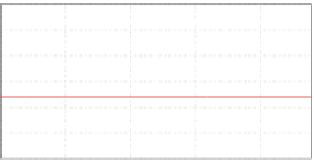Information Technology Reference
In-Depth Information
a
b
evolution of the target state of the quantum system
evolution of the state of the quantum system
0.4
0.4
0.35
0.35
0.3
0.3
0.25
0.25
0.2
0.2
0.15
0.15
0.1
0.1
0
50
100
150
200
0
50
100
150
200
t (sec)
t (sec)
Fig. 13.2
(
a
) Desirable quantum states in the first test case, (
b
) Actual quantum states in the first
test case
a
b
evolution of the target state of the quantum system
evolution of the state of the quantum system
0.4
0.4
0.35
0.35
0.3
0.3
0.25
0.25
0.2
0.2
0.15
0.15
0.1
0.1
0
50
100
150
200
0
50
100
150
200
t (sec)
t (sec)
Fig. 13.3
(
a
) Desirable quantum states in the second test case, (
b
) Actual quantum states in the
second test case
to
4
are depicted in Fig.
13.2
a, while the convergence of the actual values
ii
;iD
1; ;4 towards the associated desirable values is shown in Fig.
13.2
b. Similarly,
for the second case, the desirable values of elements
ii
;iD 1; ;4are shown
in Fig.
13.3
a, while the associated actual values are depicted in Fig.
13.3
b. It can be
observed that the gradient-based control calculated according to Eq. (
13.30
) enabled
convergence of
ii
to
ii
, within acceptable accuracy levels. Figure
13.4
presents the
evolution in time of the Lyapunov function of the two simulated quantum control
systems. It can be noticed that the Lyapunov function decreases, in accordance
with the negative semi-definiteness proven in Eq. (
13.31
). Finally, in Fig.
13.5
,the
control signals for the two aforementioned simulation experiments are presented.
The simulation tests verify the theoretically proven effectiveness of the proposed
gradient-based quantum control scheme. The results can be extended to the case of
control loops with multiple control inputs f
i
and associated Hamiltonians H
i
;iD
1; ;n.








































































































































































